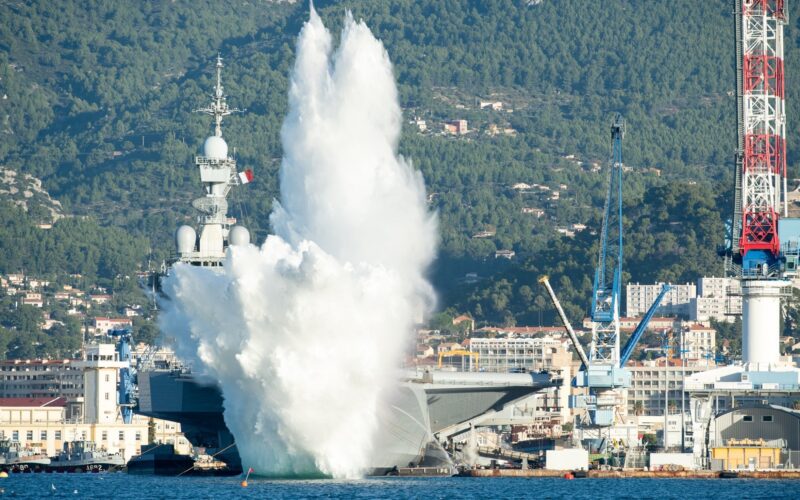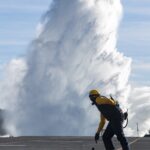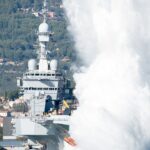The Charles de Gaulle nuclear aircraft carrier, flagship of the Marine Nationale (the French Navy), has successfully completed a model firings campaign to verify the optimal functioning of its catapults.
These test firings were carried out in Toulon, southern France, between November 13 and 21, 2023, through a collaborative effort involving the manufacturer Naval Group and two services of the French Navy: Fleet Support and the Naval Aeronautics Experimentation Center (CEPA/10S).
To achieve this, models of varying masses, replicating the Dassault Rafale Marine fighter and the Northrop Grumman E2-C Hawkeye airborne early warning and control aircraft in different flight configurations, were catapulted from the Charles de Gaulle. These models served as practical tools for assessing the efficiency of the catapult system and ensuring its readiness for actual aircraft launches.
The 64 shots fired on each of the two catapults during these tests not only verify the performance of the catapults but also allow the flight deck personnel and sailors responsible for aviation installations to regain their proficiency in aircraft recovery operations.
One aircraft launched every 30 seconds
The two steam catapults on the Charles de Gaulle have the capacity to launch aircraft ranging from 8 to 23 tons. On average, an armed and fueled Rafale M fighter weighs 20 tons. At full speed, the warship can launch one aircraft every 30 seconds.
France is currently developing its next-generation nuclear aircraft carrier. Called PANG (Porte-Avions de Nouvelle Génération, New Generation Aircraft Carrier), its construction is slated to begin by 2026, with sea trials to start by 2037.
Equipped with General Atomics electromagnetic catapults, it will be able to launch the carrier-capable New Generation Fighter, currently developed by France in partnership with Germany and Spain, which has an expected mass of around 30 tons.




